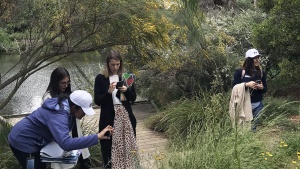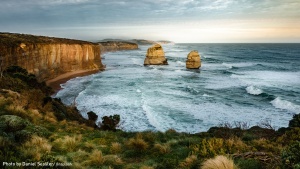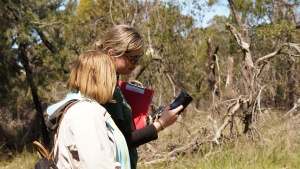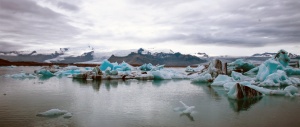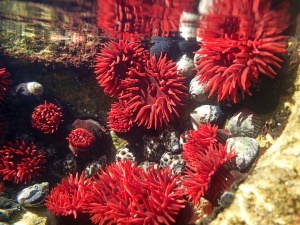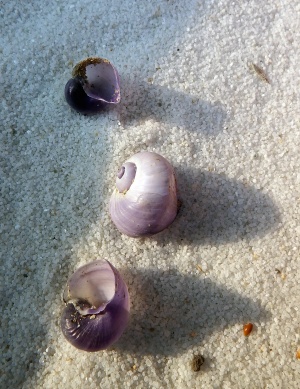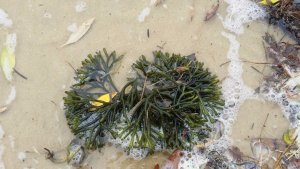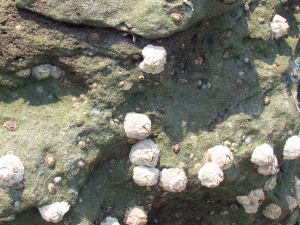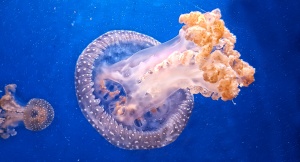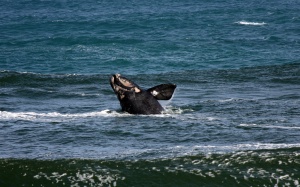Jen Sutfin
Community Groups
Community groups have been an invaluable resource for collecting data over our many trails around Australia. Repeated data collection over the same location gives scientists higher confidence in the validity of the data, meaning it is more likely to be used for climate change research.
If you are a member of a community group, check out our trails page to see if there is a local trail you can get involved in monitoring, or reach out to us at This email address is being protected from spambots. You need JavaScript enabled to view it. to discuss your involvement further.
Other Ways You Can Contribute
Participate in hackathon style events, solve data challenges that benefit nature
Host your own virtual "Data Validation Blitz" using the collateral below
Phenological Changes in the Southern Hemisphere
Changes in the timing of important life-cycle stages of plants and animals, such as flowering, breeding and migration, have provided some of the strongest evidence of climate change impacts on our natural and managed systems. These changes have the potential to disrupt predator-prey relationships and impact on food webs by changing the competition between species. Understanding how individual species and ecosystems will respond to future changes is important for effective planning in natural resource management and agricultural production.
Although we anticipate that species may not respond in similar ways across the globe it is only recently that we have been able to look for consistent patterns amongst southern hemisphere species and regions. For example, a recent study found that overall spring life-cycle stages are starting earlier. However, there were differences between species: for example marine species were more likely to commence breeding earlier than in terrestrial ones, and flowering in plants more so than breeding in birds. One of the strongest signals came from Australian grape vines, with varieties in many regions now reaching maturity, or ready for harvest, much earlier than previously.
At present, we only know a little about how changes seen in single species might impact on the relationship between species and the ecosystem as a whole. This is because, according to the authors of the study, there are large gaps in the information available on the patterns of life-stages of plants and animals in many regions and, as a consequence, there is an urgent need to fill these data gaps. ClimateWatch was cited as an example as one of the ways of filling the gaps.
To read the full article about changes in the Southern hemisphere, click here.
Our Scientists
ClimateWatch was developed with guidance and support from researchers, scientists and technology experts. This page outlines the current governance structure of ClimateWatch and provides more information on those involved in the program.
Steering Committee
Formed to oversee the delivery and development of ClimateWatch objectives and provide scientific and strategic advice.
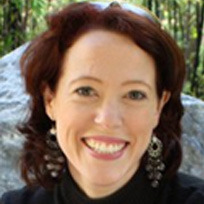 Dr Linda Beaumont
Dr Linda Beaumont
Linda is a research scientist and lecturer at Macquarie University’s School of Biological Sciences. Her research focusses on the biological impacts of climate change. Much of Linda’s work involves the use of environmental models to assess potential future changes to species distributions. She is also a member of the Earthwatch Scientific Advisory Committee.
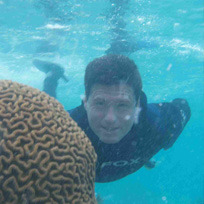 Professor David Booth
Professor David Booth
David is Professor of Marine Ecology at the University of Technology Sydney and Chair of the Scientific Advisory Committee of the Sydney Institute of Marine Science. He has research interests in reef fish ecology, climate change and other anthropogenic impacts on fishes and fisheries. David is also on the Earthwatch Scientific Advisory Committee.
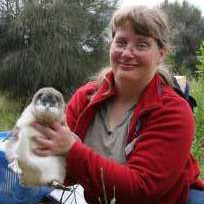 Dr Lynda Chambers
Dr Lynda Chambers
Lynda is a zoologist and climatologist based at the Centre for Australian Weather and Climate Research (Australian Bureau of Meteorology). She specialises in climate impact and adaptation research, in particular its interface with Australian flora and fauna. Lynda has been involved with ClimateWatch since its inception.
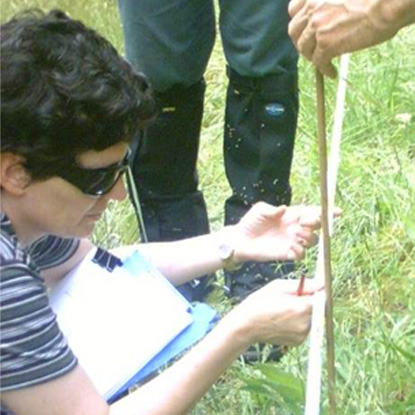 Dr Marie Keatley
Dr Marie Keatley
Marie is a plant ecologist at Parks Victoria and The University of Melbourne whose research focuses on phenology. This means she studies the different life stages of plants, such as flowering and fruiting, to understand how these stages influence one another as well as how climate and other factors influence them. Marie is also one of the founders of ClimateWatch.
ClimateWatch Species Advisors
The role of the ClimateWatch Species Advisors is to provide guidance to ClimateWatch on the selection of indicator species, develop the species information available online, and review ClimateWatch data relevant to their species group. The current species advisors are:
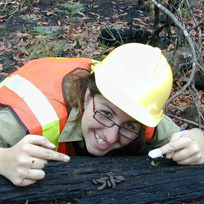 Dr Lisa Cawthen | Mammals
Dr Lisa Cawthen | Mammals
Lisa is a wildlife ecologist working in Tasmania as a researcher, community educator and consultant. Lisa has worked on a range of environmental project but her main research focus has been improving how we manage our forests for wildlife. She recently completed her PhD at the University of Tasmania, researching bats in an effort to conserve them and their habitat.
 Dr Lynda Chambers | Birds
Dr Lynda Chambers | Birds
See above for bio
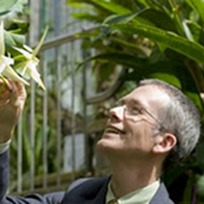 Dr Tim Entwisle | Plants
Dr Tim Entwisle | Plants
Tim is the Director and Chief Executive, Royal Botanic Gardens Melbourne and Cranbourne. He is a scientist and scientific communicator with a broad interest in plants, science and gardens. Tim’s research interest is freshwater algae: since 1984, he has described dozens of new species, two new genera and a new family of algae.
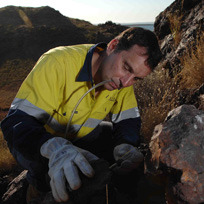 Dr Volker Framenau | Spiders
Dr Volker Framenau | Spiders
Volker is one of Australia’s leading arachnologists and has significant research experience in the taxonomy and systematics, population biology and behavioural ecology of spiders and other arachnids. Volker is a Director of Phoenix Environmental Sciences, a Western Australian environmental consulting company that conducts biological surveys for mining and infrastructure projects.
 Dr Lisa Gershwin | Jellies and Drifters
Dr Lisa Gershwin | Jellies and Drifters
Lisa is marine biologist in Tasmania and the Director of the Australian Marine Stinger Advisory Services. She has over 18 years of experience in jellyfish research, and has discovered more than 160 new species. Her recent research has focussed on forecasting the deadly irukandji bloom in tropical Australia. Lisa is also a passionate science writer and communicator.
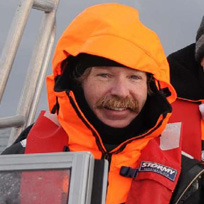 Dr Curt Jenner | Whales
Dr Curt Jenner | Whales
Curt is the Managing Director and Principal Investigator at the Centre for Whale Research, Western Australia. His interests include population biology of humpback whales and blue whales, their migratory pathways, and the relationship of these pathways to oceanographic features. As a Master Mariner, his strong sailing background has been very useful in these pursuits.
 Dr Marie Keatley | Plants
Dr Marie Keatley | Plants
See above for bio
 Dr Anthony Richardson | Jellies and Drifters
Dr Anthony Richardson | Jellies and Drifters
Anthony is marine researcher at CSIRO and a Senior Lecturer at The University of Queensland. He has diverse research interests in marine ecology, climate impacts research and analysis of large datasets using modern data analysis techniques. Anthony’s current research focusses on the effects of environmental variability on marine systems to predict impacts of climate change.
 Dr David Schoeman | Beach Invertebrates
Dr David Schoeman | Beach Invertebrates
Dave is a marine biologist at the University of the Sunshine Coast who researches how marine critters respond to climate change. His research focusses on identifying and quantifying ecological consequences of climate change at scales from the very local to global, and on designing strategies to minimise the loss of ecosystem services.
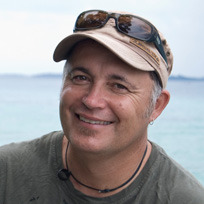 Associate Professor Steve Smith | Rocky Shore Marine
Associate Professor Steve Smith | Rocky Shore Marine
Steve is a marine benthic ecologist based at Southern Cross University’s National Marine Science Centre. He specialises in measuring and monitoring the biodiversity of subtropical marine and estuarine habitats. Steve is particularly interested in molluscs, and how these animals respond to natural and human-induced changes to their environment.
 Dr Reid Tingley | Reptiles and Amphibians
Dr Reid Tingley | Reptiles and Amphibians
Reid is a Research Fellow in the ARC Centre of Excellence for Environmental Decisions (CEED) at The University of Melbourne. Reid’s research combines field work with lab experiments and statistical modelling to understand how species traits and human activities influence the processes of invasion and extinction in amphibians and reptiles.
Previous Advisors
Science Advisory Panel (SAP)
David Cantrill (Royal Botanic Gardens Melbourne), Andy Donnelly (Earthwatch), Ian Endersby (Australian Entomology Society), Sue Jenkins (ACF), Andy Lowe (University of Adelaide), James O'Connor (BirdLife Australia), Brett Summerell (Royal Botanic Gardens Sydney), Stephen Williams (James Cook University), Dr Elvira Poloczanska (CSIRO).
Western Australian Science Advisory Panel
Kingsley Dixon (Botanic Gardens and Parks Authority), Rich Weatherill (Earthwatch Australia), Nic Dunlop (Conservation Council WA), Lynda Chambers (Bureau of Meterology Melbourne), Volker Fremenau (WA Museum), Colin Yates (Department of Environment and Conservation), Will Stock (Edith Cowan University), Leonie Valentine (Murdoch University), Kevin Thiele (WA Herbarium), Nicola Mitchell (University of Western Australia), Grant Wardell-Johnson (Curtin University).
Technological Advisory Panel
Paul Flemons (Australian Museum), Donald Hobern (CSIRO, Atlas of Living Australia), Piers Higgs (Gaia Resources), Bill Wright (Bureau of Meteorology), Lynda Chambers (Bureau of Meteorology), Russ Weakley (Max Design), Peter Houghton (Earthwatch), Andy Donnelly (Earthwatch), Chris Gillies (Earthwatch).
Community Engagement Panel
Faycal Benabdellaziz (NAB), Lucy Broad (ABC – Climate Sustainability Project), John Eather (KPMG), Tim Entwisle (Royal Botanic Gardens Melbourne), Mark Forstmann (Totem Films), Nick Lee (ABC – Catalyst), Simon Stroud (Dept of Environment and Climate Change, Parks and Wildlife Group), Andy Donnelly (Earthwatch), Sara Davis (Earthwatch), Rachel Maitland (Earthwatch).
Climate Crisis
Increasing global temperatures
It's well understood that climate change will lead to an increase in global average temperatures. But what does a 2° C average increase really mean? You might be surprised to hear that the difference between an ice age period and today's temperature is just 2° C on average. The keyword here is 'on average'. It's not simply the difference between a 20° C day and a 22° C day, but average temperatures across the world over an entire year.
Most places on the planet will get far warmer, some will get drier and others wllh be much wetter. And our polar ice caps will melt. More 'extremes' is something we will become accustomed to. Although there are many apparent contradictions some consensus on major impacts are emerging. There will always be uncertainty in understanding a system as complex as the world’s climate; however, there is now strong evidence that significant global heating is occurring.
A few thousand years ago plants and animals would have been able to adapt to climate change by moving, either immediately or gradually over generations. Now, as wildlife is increasingly isolated in protected areas, they are no longer able to move as the regions outside the protected areas are filled with agriculture or human habitation. As a result, scientists predict that over a million species will be threatened with extinction.
Make a difference
ClimateWatch was developed to understand the effects climate change is having on Earth's natural processes. Essentially, ClimateWatch is based on phenology, the study of periodic events in biological life cycles and how these are influenced by seasonal and interannual variations in climate. Many studies have already provided insight into the relationship between climate variables, such as temperature and rainfall, to the timing of these phenophases (an observable stage or phase in the annual life cycle of a plant or animal that can be defined by a start and end point).
By contributing to ClimateWatch you are taking direct action to make a positive difference to the Climate crisis.
Waratah Anemone
Flower-like invertebrate that has many long tentacles surrounding a central mouthpart which is attached to a hard surface. These specialised fighting tentacles come from the acontia, which appear as white spots on the top of the column. At low tide or when disturbed, the tentacles retract and the anemone looks like a round blob of jelly. They range in colour from bright red, reddish-brown to dark purple.
Their tentacles contain hundreds of stinging cells called ‘nematocysts’ which the anemone uses to sting and immobilize their prey, and to do battle with other unrelated anemones. These are the same cells that give Blue Bottles their sting although most anemone species cannot penetrate human skin.
Violet Snail
Medium marine snails (molluscs) that float around in the open ocean. They have a purple shell that lightens in colour as you move towards the flattened top of the shell. The shell itself is very light weight and they have no operculum (lid). Their flesh is a dark purple or sometime black.
They float around the open oceans upside down, attached to a raft of mucus bubbles that they make.
Size
Up to 30 mm
Velvet Weed
A small green seaweed. It has dark round, forked fronds (branches) with a fuzzy appearance and a velvety or sponged texture.
Size
Up to 30 cm long.
Field Guide
Improve your identification skills. Download your Velvet Weed guide here!
Surf Barnacle
They are called Surf Barnacles because they prefer to live in areas of medium to high energy wave action.
Small invertebrates that live inside hard circular or pyramid-like structures made from calcium-carbonate. They have eight main side plates, surrounded by many smaller ones, giving them a scaly appearance and are usually grey with a greenish tinge.
Size
20 mm high, 25-30 mm diameter.
Field Guide
Improve your identification skills. Download your Surf Barnacle guide here!
Spotted Jelly
A large jellyfish with a rounded bell shape that is clear or tinted brown or yellow. The bell has many obvious small white crystalline spots close to the surface that are evenly distributed.
The tentacles are located in the centre of the bell, with 8 individual arms visible. Two sets of tentacles are visible: one is short, fleshy (cauliflower-like) and the other is longer, clear to white (rope-like) and extend beyond the shorter fleshy tentacles. The longer tentacles also have white spots on their ends.
Southern Right Whale
The name ‘right whale’ was given to them by early European whalers who thought they were the ‘right’ type of whale to hunt. Their slow moving nature made them easy targets and their blubber was of high quality. They also floated when dead, making them much easier to move to shore.
Generally black with small patches of white on the belly and lacking a dorsal fin. They have a rounded head and short, spatula shaped flippers with a distinctive V shaped blow.
Distinctive feature
They have numerous, pale coloured callosities around the head.

